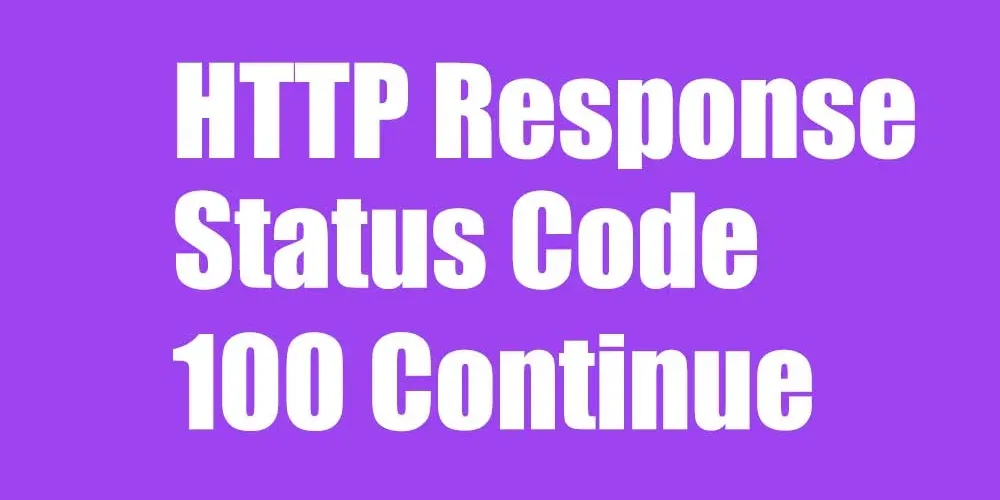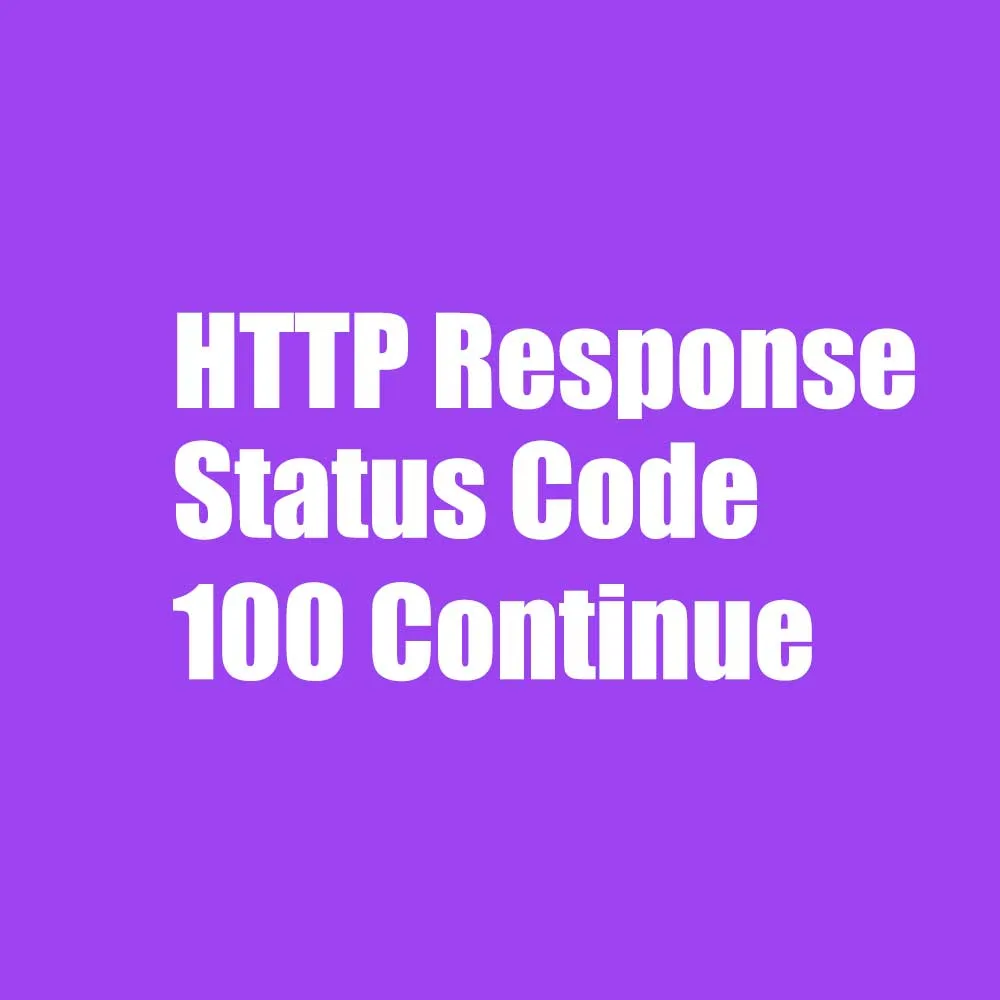What is HTTP Response Status Code 100 Continue?
The HTTP response status code 100 Continue is part of the 1xx category of status codes, which indicates an informational response. The 100 status code is used to indicate that the server has received the initial part of a request from the client and is ready to receive the remaining part.
When a client makes a request to a server, the server may need to process the request in multiple steps. For example, a large file may be uploaded to the server in several chunks, with each chunk being sent as a separate request. In these cases, the server may need to send an initial response to the client to indicate that it has received the request and is ready to receive the remaining part.
The 100 Continue response is used to achieve this. When the client sends a request to the server, it includes an “Expect” header with the value “100-continue”. This header indicates to the server that the client is expecting to receive a 100 Continue response before it sends the remaining part of the request.
When the server receives the request with the “Expect” header, it will check if it can process the request. If the server is able to process the request, it will send a 100 Continue response to the client. This response indicates that the server has received the initial part of the request and is ready to receive the remaining part.
Once the client receives the 100 Continue response, it will send the remaining part of the request to the server. If the server is unable to process the request, it will send a different status code to indicate the reason for the failure.
The 100 Continue response is useful in situations where the server needs to process a request in multiple steps or where the request may be large and take some time to process. By sending the 100 Continue response, the server can indicate to the client that it is ready to receive the remaining part of the request, which can help to improve the efficiency of the communication between the client and server.
It is important to note that the 100 Continue response is not always required or expected. In some cases, the client may not send an “Expect” header with the value “100-continue”, in which case the server will not send a 100 Continue response. Additionally, some servers may not support the 100 Continue response or may not be configured to send it.
How is HTTP Response Status Code 100 Continue Used?
In general, the 100 Continue response is most commonly used in situations where the client is uploading a large file to the server or where the server needs to process a request in multiple steps. By using the 100 Continue response, both the client and server can be confident that the request is being processed correctly and that there are no errors or issues that may prevent the request from being completed.
When handling the 100 Continue response, web developers should ensure that their applications are configured to handle the response correctly. This may involve checking for the presence of the “Expect” header and sending the appropriate response, or handling the response in some other way depending on the specific needs of the application.
In conclusion, the HTTP response status code 100 Continue is an important part of the web protocol that is used to indicate that the server has received the initial part of a request from the client and is ready to receive the remaining part. This status code is most commonly used in situations where the client is uploading a large file or where the server needs to process a request in multiple steps. By handling the 100 Continue response correctly, web developers can ensure that their applications provide a good user experience and operate reliably and efficiently.
Request:
POST /upload HTTP/1.1
Host: example.com
Content-Length: 10000 [First part of file data].
Response:
HTTP/1.1 100 Continue
Example 2
Request:
POST /upload HTTP/1.1
Host: example.com
Content-Length: 10000 [Second part of file data]
Response:
HTTP/1.1 100 Continue
In both of these examples, the client is sending a file in multiple parts, and the server is verifying the validity of each part by responding with HTTP 100 Continue. This allows for the efficient and secure transfer of large files, as the server can confirm that each part of the request is valid before proceeding with the next part
HTTP Response Status Code 100 Continue FAQ
No, there are other provisional response status codes in the HTTP/1.1 protocol, such as HTTP response status code 101 Switching Protocols, HTTP response status code 102 Processing, and HTTP response status code 103 Early Hints.
No, HTTP response status code 100 Continue is typically used in situations where the client needs to send a large amount of data to the server, and the server wants to ensure that the request is valid before proceeding.
If the client does not receive HTTP response status code 100 Continue from the server, it may assume that the server has not received the initial part of the request and may resend the request. This could lead to unnecessary network traffic and slower data transfer.
While HTTP response status code 100 Continue can be helpful in optimizing data transfer and improving security, it can also be misused. For example, a malicious client could send a large number of incomplete requests to a server, causing it to send back numerous HTTP response status code 100 Continue messages, which could lead to a denial of service attack.
To check the HTTP response status code 100 Continue in a request, you can use a tool such as a web browser developer console or a network traffic analyzer. These tools can help you see the HTTP response status code along with other details of the request and response..


